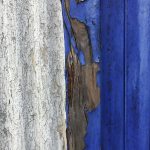
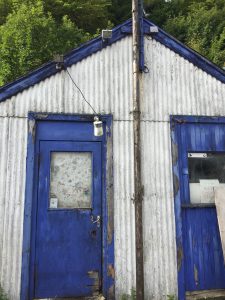
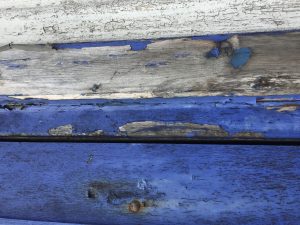
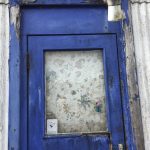
It was much warmer this morning. In fact, it was hot and uncomfortably humid. Keith came over to look at my flat and say hello to my host before we headed out for a wander around town. For the first time since I arrived it was warm enough to eat outdoors and we had a lovely lunch  overlooking the harbour, watching the boats going by. We walked up the coast to Dunollie castle, stepping in the footsteps of Turner, Walter Scott, Mendelssohn and Wordsworth. The main tower has a commanding view over the whole bay and adjacent islands. Once completely ivy covered the gardeners were hard at work to rid the stonework of this invasive vine.
overlooking the harbour, watching the boats going by. We walked up the coast to Dunollie castle, stepping in the footsteps of Turner, Walter Scott, Mendelssohn and Wordsworth. The main tower has a commanding view over the whole bay and adjacent islands. Once completely ivy covered the gardeners were hard at work to rid the stonework of this invasive vine.
The location of the castle has been occupied for over 1000 years. The family moved into a ‘modern’ house in the 1740s and there was an interesting collection of kitchen equipment dating for over a century. I recognized many items from my own childhood!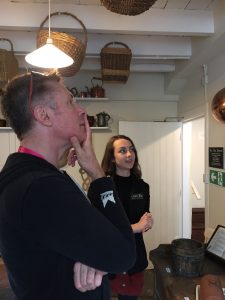
A willow garden, a fairy garden and a display of ‘Viking’ sculpture added to the interest, and a working loom had been  restored and was creating family tartan fabric. We had tea and cakes at the tea shop before heading back into town to collect our bags and board the 3:55 ferry. Keith worked out that he hadn’t been on a
restored and was creating family tartan fabric. We had tea and cakes at the tea shop before heading back into town to collect our bags and board the 3:55 ferry. Keith worked out that he hadn’t been on a 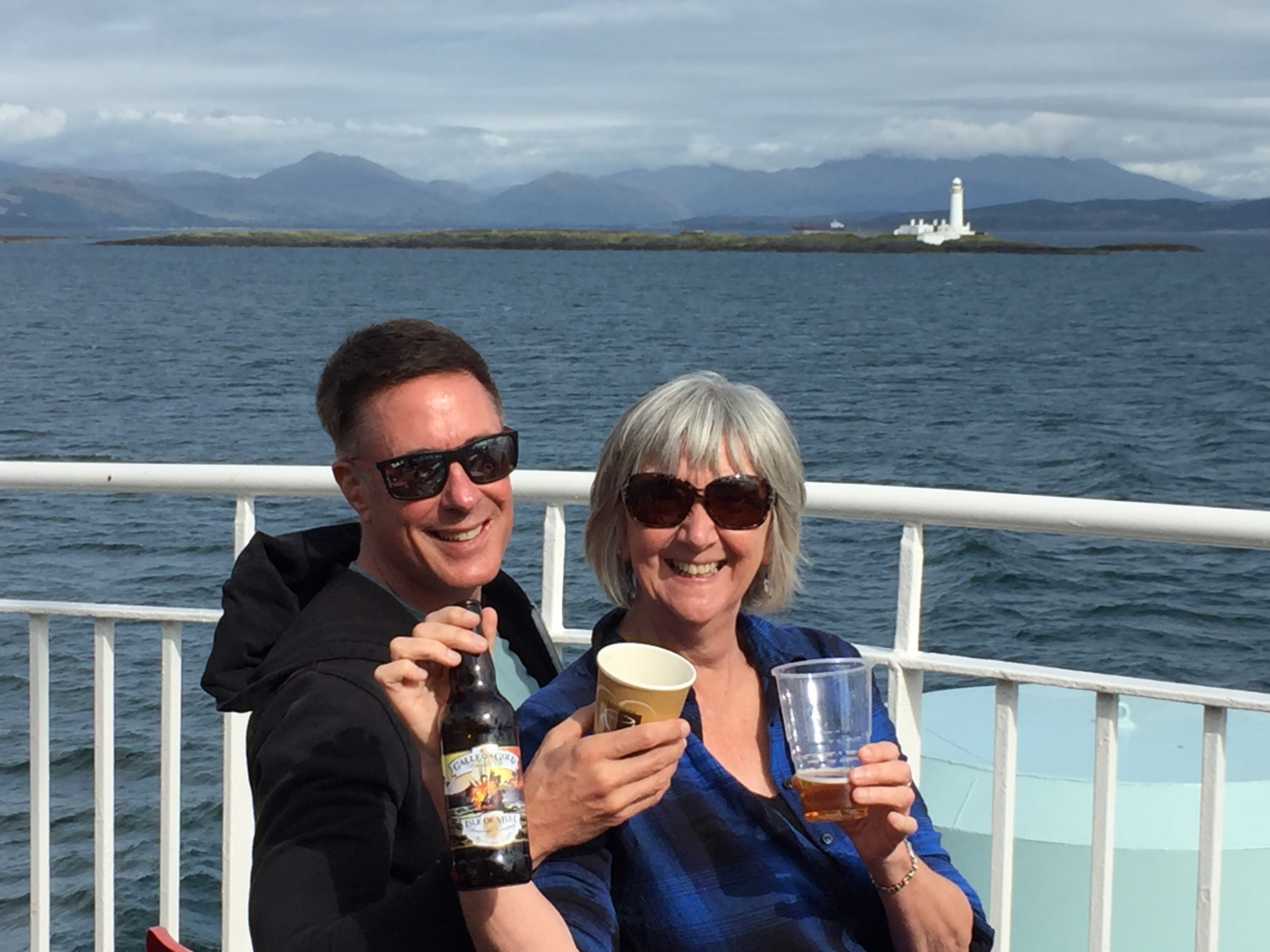 ferry since a trip to Calais when he was 21. The sun was out and the visibility was superb. The clarity of light, the expansiveness and the bare ness of the landscape reminded Keith of New Mexico. I had recently had a conversation with someone about how these remote Scottish islands have become my substitute for the desert scenery I have reveled in for many years. There are even ghost towns in Mull that are, of course, high on my ‘must see’ list. We had on the deck and I enjoyed a beer brewed in a Mull brewery commemorating the sinking of a galleon from the Spanish Armada that sunk in Tobermory bay!
ferry since a trip to Calais when he was 21. The sun was out and the visibility was superb. The clarity of light, the expansiveness and the bare ness of the landscape reminded Keith of New Mexico. I had recently had a conversation with someone about how these remote Scottish islands have become my substitute for the desert scenery I have reveled in for many years. There are even ghost towns in Mull that are, of course, high on my ‘must see’ list. We had on the deck and I enjoyed a beer brewed in a Mull brewery commemorating the sinking of a galleon from the Spanish Armada that sunk in Tobermory bay!
We walked the 15 minutes to the Mull hotel and spa which is in a wonderful location just along the coat from the ferry terminal at Craignure. It’s an ugly building, probably built in the 1960s, but the quirky things about the facilities and the service had me more amused than upset. We walked down to the ocean where Keith soon made friends with a  doggy eager to ‘go fetch’ and I wandered off to take photos of ruined boats. What else?! We had dinner in the restaurant with a view all the way back to the mainland and we both selected seafood which seemed to be the only possibility in
doggy eager to ‘go fetch’ and I wandered off to take photos of ruined boats. What else?! We had dinner in the restaurant with a view all the way back to the mainland and we both selected seafood which seemed to be the only possibility in
these surroundings. During dinner we planned our itinerary for tomorrow while commenting on the fact that we seemed to be the youngest people in the restaurant, which was very busy with a large tour group. After dinner I wandered along the shore alone for a while watching the moon rise.
Getting to Iona was the main business of the day. I had breakfast at the outdoor picnic table with a wonderful sea 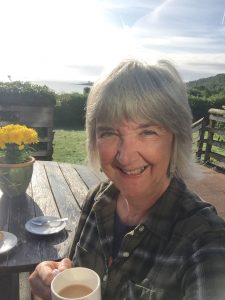 view and then we were off on our journey. Unfortunately we’d not been able to book a car rental from Craignure and so we had to get to Tobermory at the far north of Mull. Rather than wait a couple of hours to get the regular bus Keith suggested we got a taxi for the 40 minute journey. Our driver was Chris, a Lithuanian, who, on hearing we
view and then we were off on our journey. Unfortunately we’d not been able to book a car rental from Craignure and so we had to get to Tobermory at the far north of Mull. Rather than wait a couple of hours to get the regular bus Keith suggested we got a taxi for the 40 minute journey. Our driver was Chris, a Lithuanian, who, on hearing we 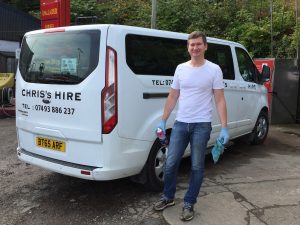 were musicians said, “Oh, Philip Glass, Metamorphosis 1 and 2.” I don’t think he could have made a more unexpected comment. I’ve been to several Philip Glass festivals in Monterey, have reviewed his works for various newspapers and online magazines. But not only did our driver mention Glass, but what an obscure piece to name! I wondered idly if there was some connection in their business, because before Philip Glass gained prominence he was a taxi driver in New York!
were musicians said, “Oh, Philip Glass, Metamorphosis 1 and 2.” I don’t think he could have made a more unexpected comment. I’ve been to several Philip Glass festivals in Monterey, have reviewed his works for various newspapers and online magazines. But not only did our driver mention Glass, but what an obscure piece to name! I wondered idly if there was some connection in their business, because before Philip Glass gained prominence he was a taxi driver in New York!

Sea front, Tobermory
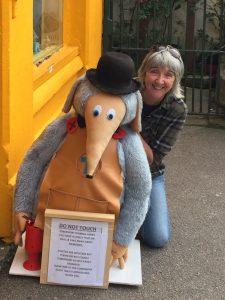
With Mr Tobermory Womble
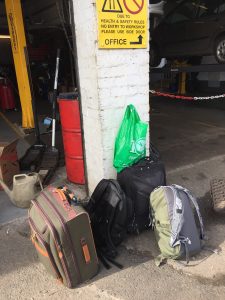
Waiting to pick up our Yaris
We arrived at the rental place, getting our first glimpse of Tobermory which Judith reminded me is one of the most popular scenes on jigsaw puzzles with its coloured houses perched on the bay with reflections rippling in the ocean below. I was delighted to find Mr Tobermory Womble outside a shop, but that was the only reference I saw to the Wombles.
The car was a hybrid and we fiddled with the SatNav for a while before getting on the road. The road to Salen was mostly a single carriageway in both directions but I’d read about the challenges of driving on the single track roads which form the rest of Mull’s communication, and their ubiquitous pull-outs for passing places. We stopped for a brief look at the mausoleum of Major-General Lachlan Macquarie, who, with his wife is buried here. Born in 1761 in 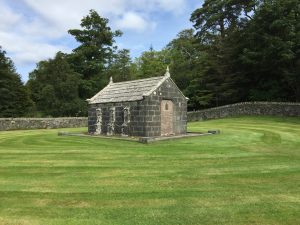

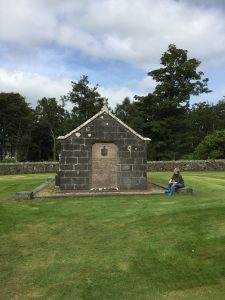
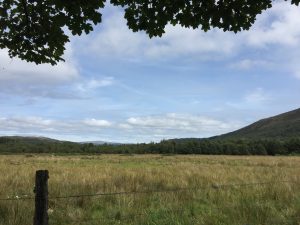
This could be Colorado!
nearby Ulva he became the governor general of New South Wales, Australia. My guide book says that he brought a new humanity to the convict settlements in Australia, so much so that minor crimes were committed in Britain by despairing people in the hopes that they’d get deported and have a better life! As we walked up the path leading to the museum we were struck by the expansiveness of the landscape. For Keith it triggered memories of the open spaces in New Mexico, big skies, lush vegetation. We even caught a glimpse of three roe deer bounding across a meadow.
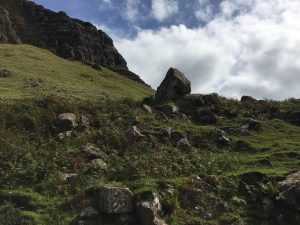
Tragedy Rock
South from Salen the road became single track as it bordered Loch Keal. We had to keep a watchful eye on the twists and turns of the road, not to mention the various sheep and cows we encountered. The cliff above us loomed high 
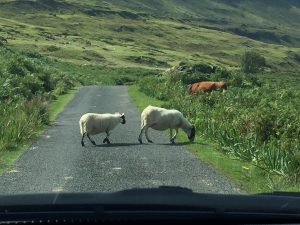
and I wondered what it had been like to decide to build this road on the ten feet of land between the rock face and the sea. The rock face is 1000ft high and judging from the debris the rock is crumbling. In the 18th century a couple, celebrating their wedding ceremony retired to their little cottage and were never seen again. Their cottage had been crushed by a gigantic boulder, and from then on this stretch of cliff has been known as Tragedy Rock.
Across the Loch we could see the house on the isle of Inch Kenneth where Sheenah, Keith’s friend whom I had met in Bath once stayed. It was named after Kenneth, one of St Columba’s disciples. Sheenah had been a guest in the three storey Victorian mansion, which was glistening in the late afternoon sunlight. The Mitford family lived here. See ‘If these walls could speak’ about their time there: https://vimeo.com/14940958. The house now belongs to Charles Darwin’s grand daughter.
It’s only 38 miles from Salen to Fionnphort, but it took us 3 hours to drive with the single track roads and wandering animals to negotiate. We arrived at Fionnphort, Mull’s extreme South West corner in nice time for the ferry to Iona. No visitor cars are allowed on Iona so we had to park the car in Fionnphort and walk down to the boat. We were on the 4.30 ferry and were the only passengers! 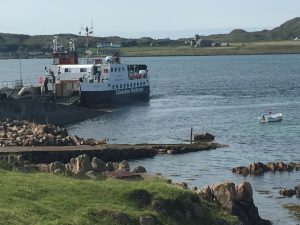
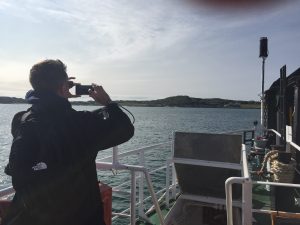 It’s
It’s  a five minute crossing and we were fortunate that we had bright sunlight for our journey. The Abbey of Iona is perched on the waterfront and is only 10 minutes walk from the ferry. The small village of Baile Mor is sandwiched between the ferry and the abbey and mainly consists of one street of cottages, two hotels, a Spar, a cafe and a couple of souvenir shops. Total population of the island is around 100 but day trippers far outnumber the resident population.
a five minute crossing and we were fortunate that we had bright sunlight for our journey. The Abbey of Iona is perched on the waterfront and is only 10 minutes walk from the ferry. The small village of Baile Mor is sandwiched between the ferry and the abbey and mainly consists of one street of cottages, two hotels, a Spar, a cafe and a couple of souvenir shops. Total population of the island is around 100 but day trippers far outnumber the resident population.
After checking in to the St Columba hotel I was eager to go walkabout while the light was good for photography. The weather is notoriously changeable. The thing that surprised me the most on our reconnoiter to the northern tip of the island was the lush vegetation. I certainly had not anticipated seeing apples trees heavy with fruit on this remote, windswept corner of the world. Ah, ha! I just caught myself. Cynthia, Keith’s friend and one of the instigators of our visit had sent me a gift which Keith gave me on our first evening. It was a wonderful book entitle ‘Love of Country – A Hebridean Story’ by Madeleine Bunting. I didn’t read it on the trip, but since coming home I’ve read several chapters and one of the things she points out is that although today Mull and Iona seem at the edge of the world, when St Columba founded a monastery there in the 6th century these ‘now remote’ islands were the centre of a European culture comprising Iceland , Ireland, NW Scotland and the Hebrides all the way to the Faroe Islands and Norway. hence the Viking invasion of Iona and the removal of Iona’s Book of Kells to the comparative safety of Kells, Ireland. 
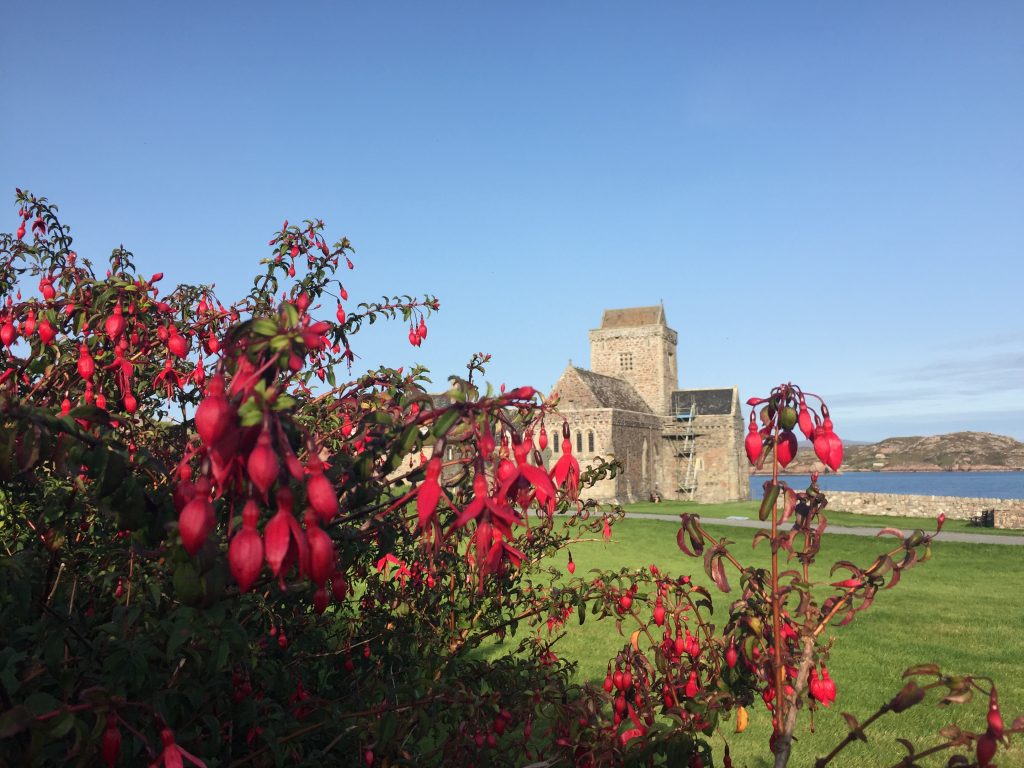
We had dinner in the hotel dining room overlooking the bay and after dinner I went off to explore the beaches south  of the ferry. I was alone on the white sands and I stopped of a while watching the moon rise about a former chapel that is now someone’s house. There was not a soul in sight and the sound of the water on the pebbles was magical.
of the ferry. I was alone on the white sands and I stopped of a while watching the moon rise about a former chapel that is now someone’s house. There was not a soul in sight and the sound of the water on the pebbles was magical.

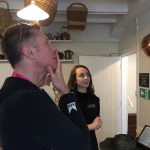
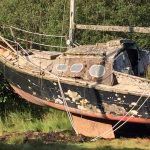

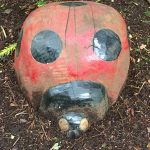
Leave a Reply